Post by fredg on Jul 7, 2015 21:10:51 GMT
Stylidium debile, commonly known as the Frail Triggerplant, is an herbaceous annual plant that grows from 15 to 30 cm (6 - 12") tall. It is endemic to coastal areas in Queensland and New South Wales, Australia.
Stylidium are variously described as protocarnivorous, paracarnivorous, subcarnivorous, borderline carnivorous, and carnivorous depending on your definition. To keep it simple I'll say it has the ability to trap and digest insects but when not in flower they are as carnivorous as a cabbage.
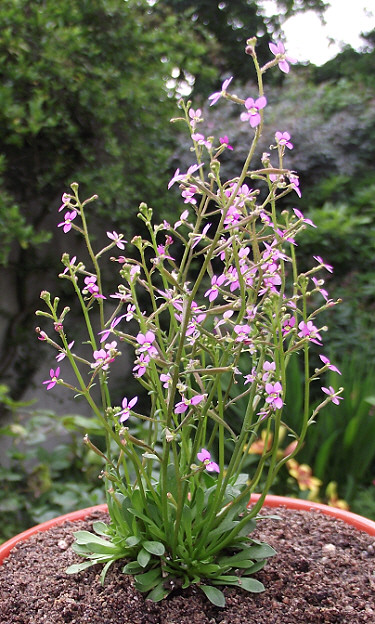
The whole plant, this was taken several weeks ago, there are many more inflorescences at present.
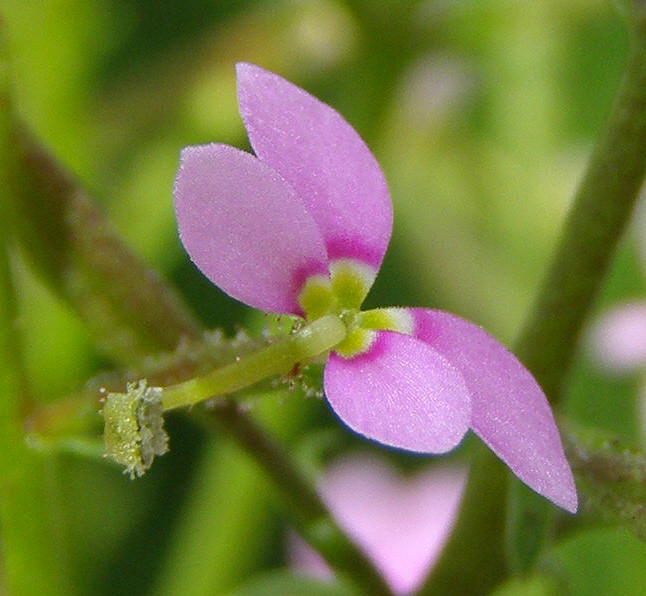
The flower, cocked and ready to fire.
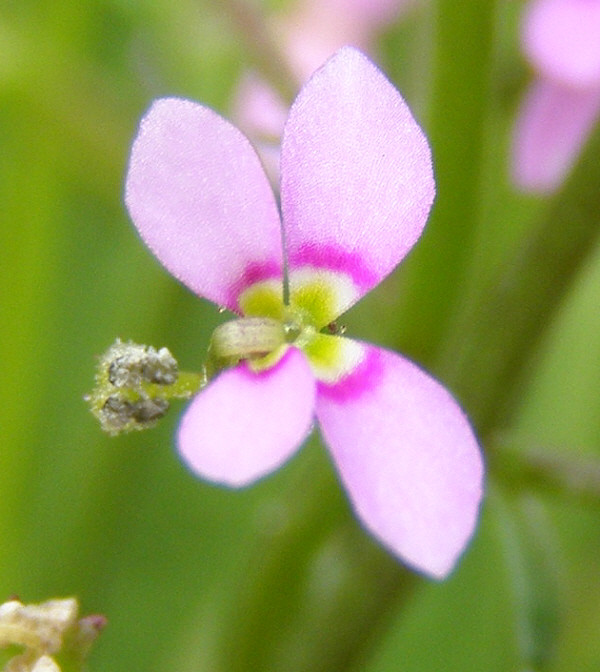
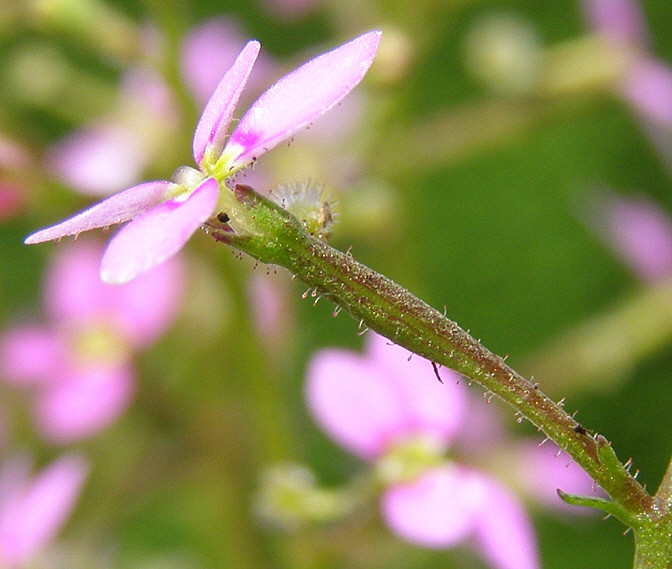
The "sticky bits"
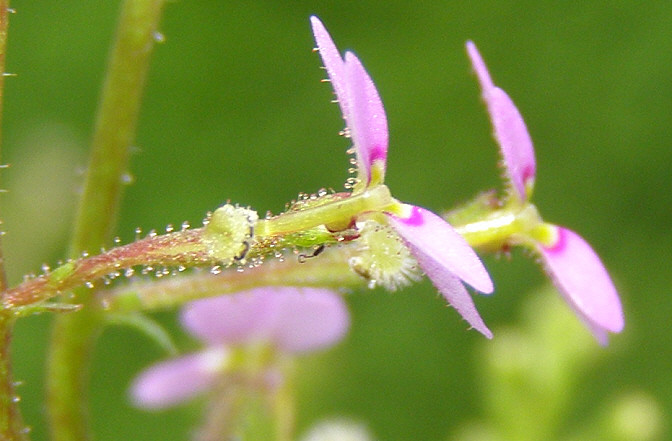
An interesting little plant, I'll have to get an updated photo of the inflorescences.
I am growing mine in the trays along with Utricularia, Drosera, Heliamphora and Cephalotus.
Stylidium are variously described as protocarnivorous, paracarnivorous, subcarnivorous, borderline carnivorous, and carnivorous depending on your definition. To keep it simple I'll say it has the ability to trap and digest insects but when not in flower they are as carnivorous as a cabbage.
Stylidium species with glandular trichomes on their sepals, leaves, flower parts, or scapes have been suggested to be protocarnivorous (or paracarnivorous). The tip of the trichome produces a sticky mucilage—a mixture of sugar polymers and water—that is capable of attracting and suffocating small insects. The ability to trap insects may be a defensive mechanism against damage to flower parts. However, trichomes of S. fimbriatum have been shown to produce digestive enzymes, specifically proteases, like other carnivorous plants. Adding species of Stylidium to the list of plants that engage in carnivory would significantly increase the total number of known carnivorous plants.
The column typical of the genus Stylidium is sensitive and responds to touch. The change in pressure when a pollinating insect lands on a Stylidium flower causes a physiological change in the column turgor pressure by way of an action potential, sending the column quickly flying toward the insect.This delayed development of the stigma prevents self-pollination and ensures that cross pollination will occur between individuals of a population.Upon impact, the insect will be covered in pollen and stunned, but not harmed. Because the column comprises the fused male and female reproductive organs of the flower, the stamen and stigma take turns in dominating the function of the column—the anthers develop first and then are pushed aside by the developing stigma.This delayed development of the stigma prevents self-pollination and ensures that cross pollination will occur between individuals of a population.
The column typical of the genus Stylidium is sensitive and responds to touch. The change in pressure when a pollinating insect lands on a Stylidium flower causes a physiological change in the column turgor pressure by way of an action potential, sending the column quickly flying toward the insect.This delayed development of the stigma prevents self-pollination and ensures that cross pollination will occur between individuals of a population.Upon impact, the insect will be covered in pollen and stunned, but not harmed. Because the column comprises the fused male and female reproductive organs of the flower, the stamen and stigma take turns in dominating the function of the column—the anthers develop first and then are pushed aside by the developing stigma.This delayed development of the stigma prevents self-pollination and ensures that cross pollination will occur between individuals of a population.

The whole plant, this was taken several weeks ago, there are many more inflorescences at present.

The flower, cocked and ready to fire.


The "sticky bits"

An interesting little plant, I'll have to get an updated photo of the inflorescences.
I am growing mine in the trays along with Utricularia, Drosera, Heliamphora and Cephalotus.

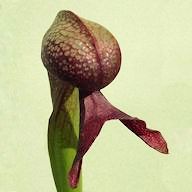



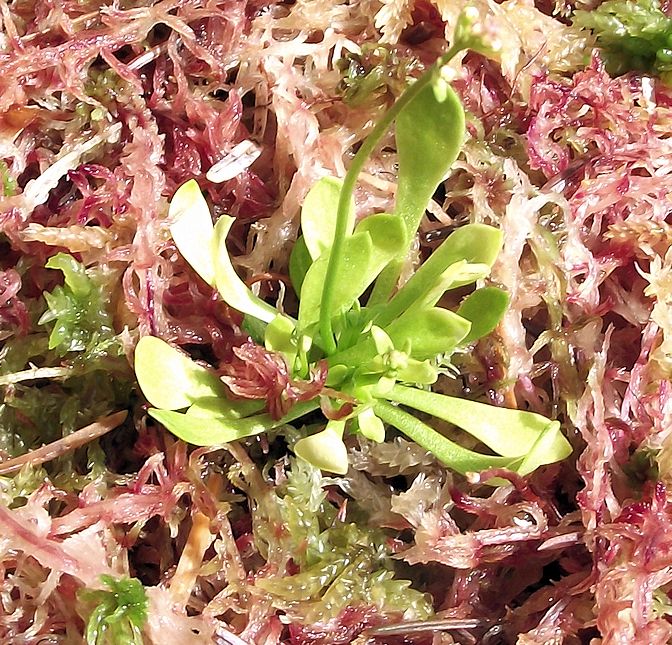

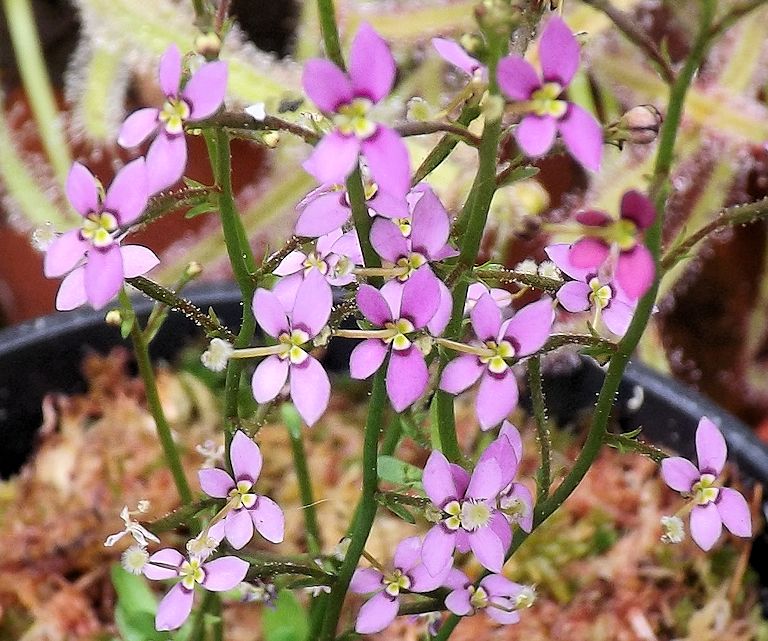





 not here it isn't
not here it isn't